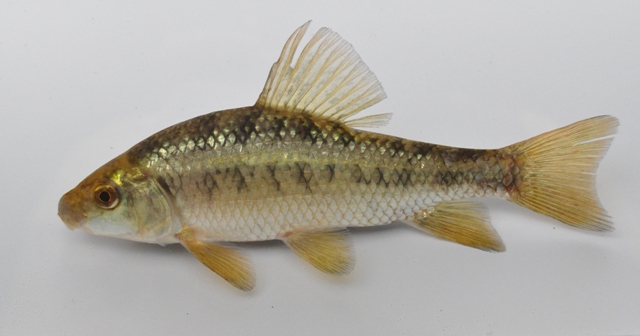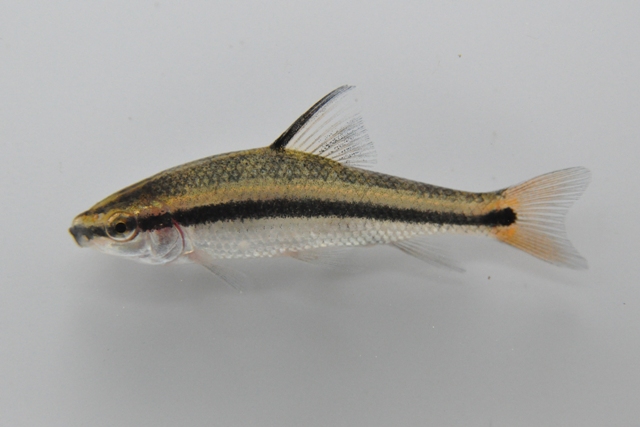Lake Chubsucker
(Erimyzon sucetta)


Lake chubsuckers, because of the destruction of much of the permanent wetlands this species relies on, are one of the rarest sucker species found in Ohio. Young (right) of both the lake chubsucker and the closely related creek chubsucker have a very distinct black stripe down their side.
Description
Lake chubsuckers are a small species of sucker with a dark golden bronze colored back and upper sides with a light cream colored or white belly. The edges of their scales have dark margins giving them a cross hatched appearance over much of their body. They have an almost terminal (ending at tip of snout) mouth with only a slight down turn to it and they usually have 11-12 dorsal rays. Adults have a series of 5-8 faint dark saddles over their back and on their upper sides. Below these along their sides they have a series of blotches which can be fused into a broad and usually faint stripe. Adult males have a hooked or falcate anal fin and when breeding they have three tubercles on each side of their snout. Young chubsuckers have a distinct black stripe down their side and are often mistaken as small minnows. They also have a black leading edge to their dorsal fin. The closely related creek chubsucker can be distinguished by having a more sub-terminal (ending below tip of snout) mouth, usually 9 or 10 dorsal rays, and a slightly more elongate body.
Habitat and Habits
Lake chubsuckers are found in natural lakes and very sluggish streams or marshes with dense aquatic vegetation and clear waters. In Ohio they are primarily found in glacially formed natural lakes often referred to as pothole or kettle lakes. Historically they were found in Nettle Lake of extreme NW Ohio, a group of small pothole lakes between Bellefontaine and Urbana Ohio, and in many small pothole lakes in NE Ohio. Additionally, they were found in three man-made lakes where one or several of these small natural lakes were flooded to form a larger reservoir. These included Buckeye, Indian, and the Portage Lakes. Today they are still present in those natural lakes that still have very clear water and an abundance of aquatic vegetation primarily in the group of lakes between Bellefontaine and Urbana. Additionally, they are still present in some locations in NE Ohio, in few larger wetlands like killbuck marsh, and small populations may still be present in Nettle, Indian, and parts of the Portage Lakes.
Reproduction and Care of the Young
Lake chubsuckers spawn in April by scattering their eggs over vegetation. Two males will press a single female between them during spawning. The eggs fall on aquatic vegetation where they remain until hatching. No further parental care is given.